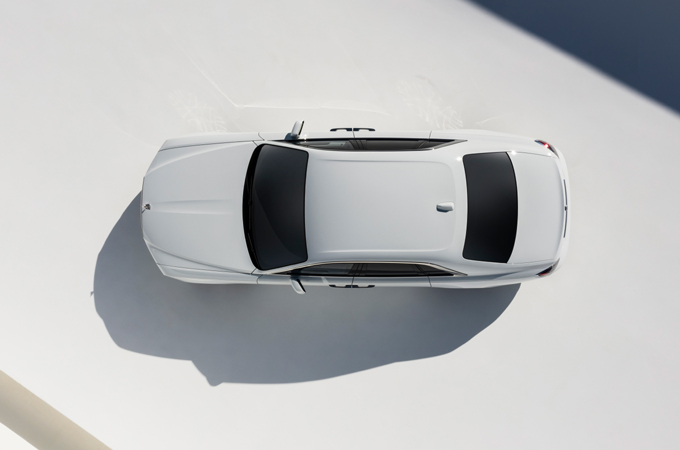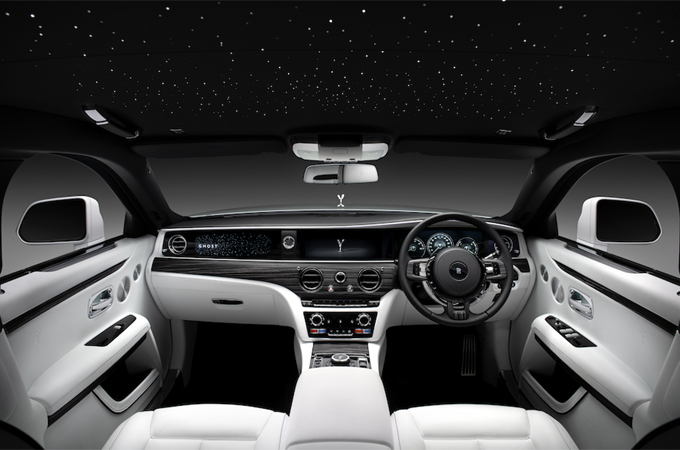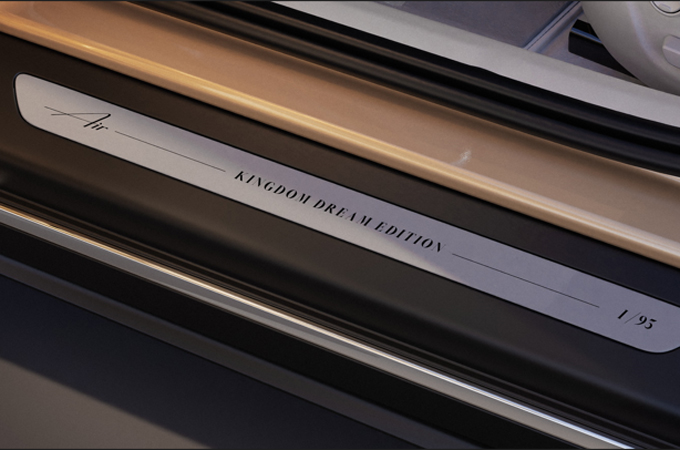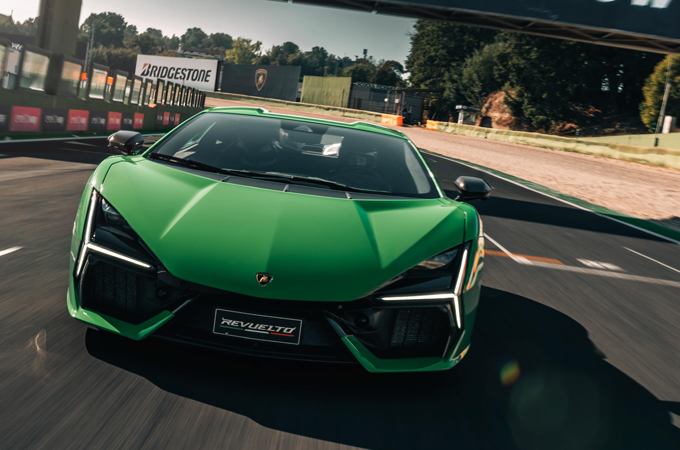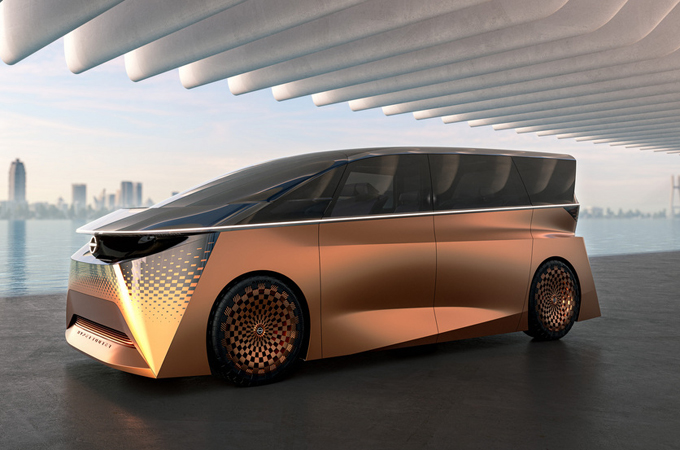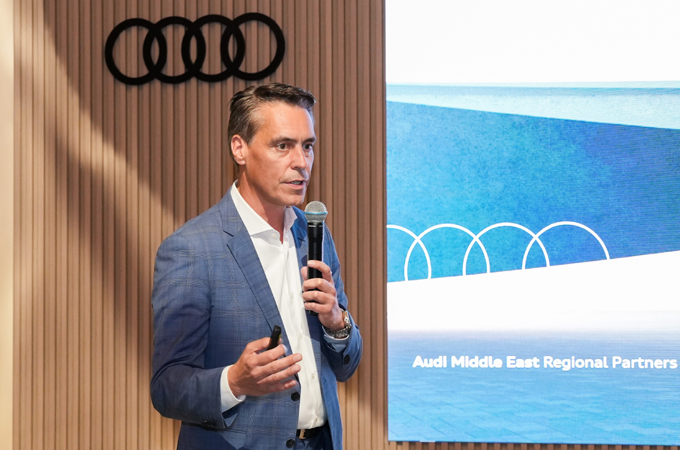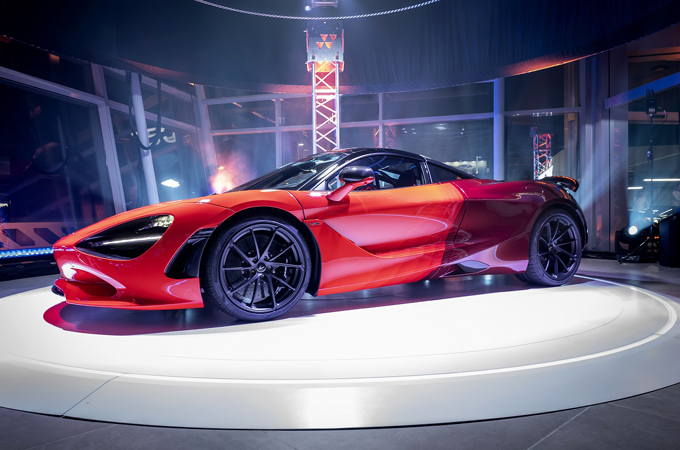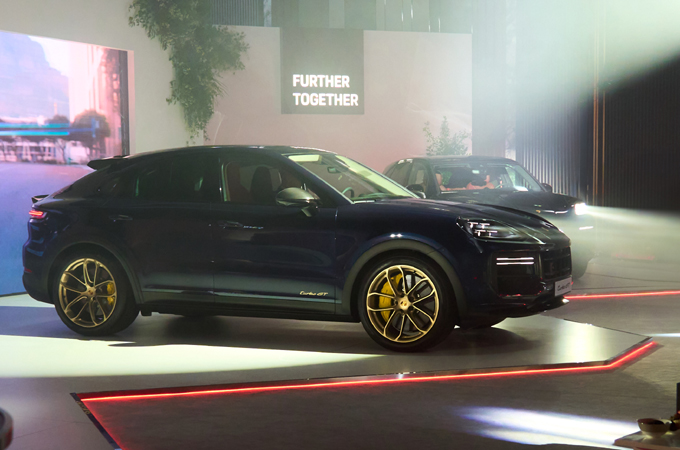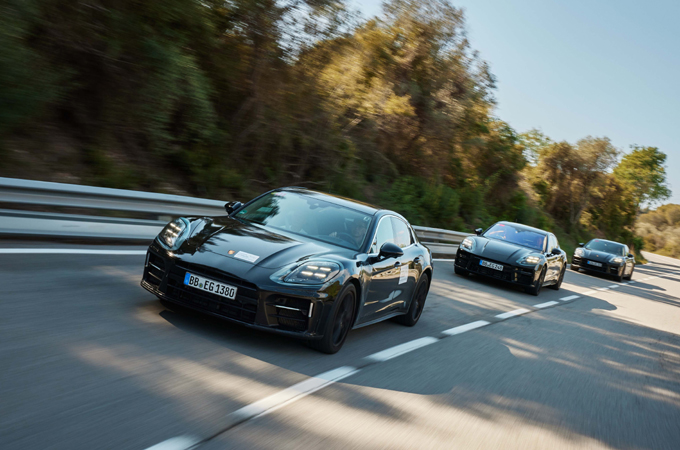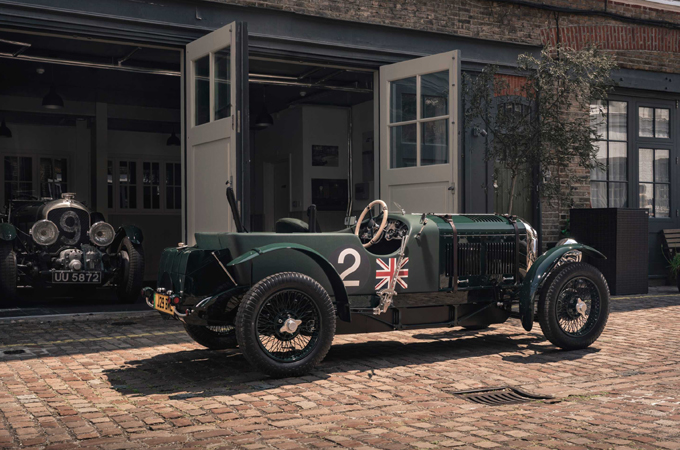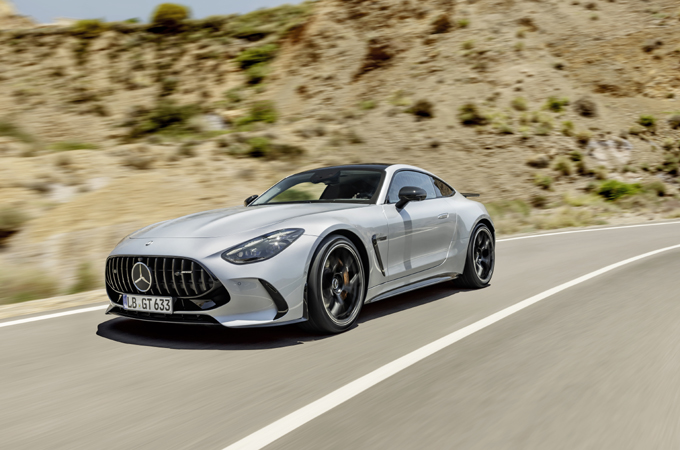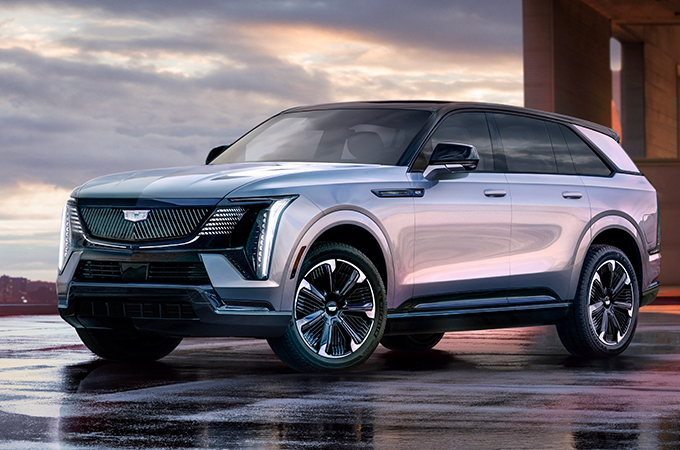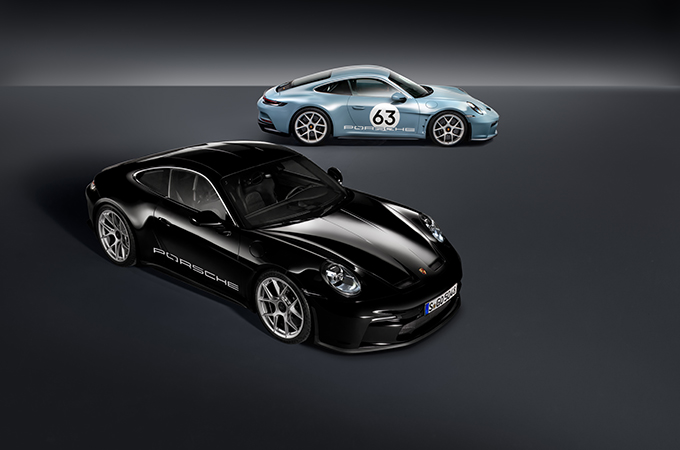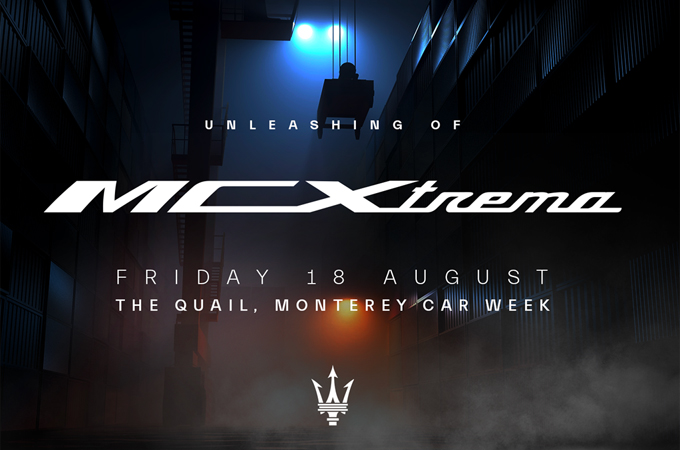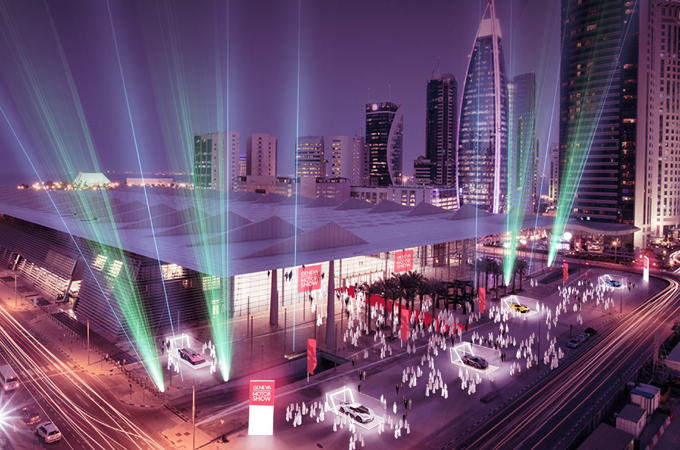Tue, Sep 1, 2020
Rolls-Royce Motor Cars today (September 1) launched the most technologically advanced Rolls-Royce yet - the new Ghost, which succeeds the most successful product in the marque’s 116-year history.
The new Ghost reflects ‘Post Opulent’ design philosophy, rejecting superficial expressions of wealth and is built on rigid aluminium Rolls-Royce spaceframe architecture.
New Ghost is perfect in its simplicity, but creating this pure and detoxifying environment was one of the greatest challenges in the marque’s history. Indeed, new Ghost is the most technologically advanced motor car Rolls-Royce has ever produced, says Rolls-Royce.
The car offers all-wheel drive and all-wheel steering for unprecedented poise and surefootedness, while the world's first Planar suspension system significantly increases its agility and effortlessness.
The new Ghost is equipped with hallmark 6.75-litre twin-turbo V12 engine, delivering 571PS and 850nm.
Interior components are tuned to specific resonant frequency to create a sense of serenity and its down lit Pantheon grille discreetly illuminates Rolls-Royce iconography
“The first Goodwood Ghost was a response to a whole new generation of clients, both in age and attitude. These men and women asked us for a slightly smaller, less ostentatious means to own a Rolls-Royce. The success of the product we created for them fulfilled our most ambitious expectations. Over its ten-year lifespan, which began in 2009, Ghost has become the most successful model in the marque’s 116-year history," says Torsten Müller-Ötvös, Chief Executive Officer, Rolls-Royce Motor Cars.
"To create a new product that would resonate with our Ghost clients for the next ten years meant we had to listen carefully to their demands. Today we set new standards in customer centricity by creating a completely new motor car for a unique group of Rolls-Royce’s clients. These business leaders and entrepreneurs demand more of their Ghost than ever. They require a new type of super-luxury saloon that is dynamic, serenely comfortable and perfect in its minimalism. Ghost is this product.
"The only components that we carried over from the first Goodwood Ghost were the Spirit of Ecstasy and umbrellas. Everything else was designed, crafted and engineered from the ground up. The result is the most technologically advanced Rolls-Royce yet. It distils the pillars of our brand into a beautiful, minimalist, yet highly complex product that is perfectly in harmony with our Ghost clients’ needs and perfectly in tune with the times,” he says.
The highly successful and diverse entrepreneurs and founders, who selected Ghost to celebrate their ongoing ascension, were citizens of the world – they had been educated abroad, they travelled extensively and experienced Rolls-Royce in many cultures, the company says.
Due to Ghost’s energetic, dynamic personality, these clients came to realise that the Rolls-Royce brand could offer more than a chauffeur-driven experience. Indeed, in the USA and areas of Europe, clients were self-driving their Ghost from the very early stages of its introduction. Meanwhile, in Asia, clients were engaging heavily in the connected technology on board, be it for business or pleasure.
Meanwhile, at Goodwood, significant advances were being made with the marque’s proprietary aluminium spaceframe architecture. First used on Phantom, then Cullinan, this spaceframe is unique to Rolls-Royce and enables the brand’s designers and engineers to develop an authentically super-luxury product, free from the constraints of platforms used to underpin high-volume vehicles. As Ghost clients required even more of their motor car, Rolls-Royce used its architecture to respond, incorporating technology such as all-wheel drive and all-wheel steering in Ghost, unlocking an entirely new, purposeful personality.
Concurrently, the design team were tracking an emerging movement that came to define Ghost’s aesthetic treatment. It spoke of a shifting attitude among Ghost clients in the way success is expressed. Named ‘Post Opulence’ internally, it is characterised by reduction and substance. In service to this, exceptional materials must be selected and celebrated. Design must be limited, intelligent and unobtrusive. This philosophy is the antithesis of ‘premium mediocracy’, a term coined by the fashion cognoscenti. This refers to products that use superficial treatments, such as large branding or, in the context of motor cars, busy stitching and other devices that create an illusion of luxury by dressing products lacking in substance in a premium skin.
The collective result is new Ghost. This is a motor car precisely tailored to its clients, that appears perfect in its simplicity, that is underpinned by remarkable substance, that is less but better, says the company.
ENGINEERING
Proprietary Aluminium Spaceframe Architecture
The marque’s designers, engineers and craftspeople demanded the freedom to create a very specific personality for new Ghost. These men and women were only able to create an authentically super-luxury product without the constraints of platforms used to underpin lesser, high-volume vehicles. Hence, the Rolls-Royce proprietary aluminium spaceframe architecture.
Reserved exclusively for Rolls-Royce, this architecture already underpins its flagship, Phantom, and its transformative SUV, Cullinan. The spaceframe’s flexibility and scalability freed the marque to serve the unique aesthetic and mechanical demands of new Ghost, and in doing so created an acoustically superior, highly rigid and dynamic proposition for Ghost within the Rolls-Royce product portfolio.
In its most pared back form, the Rolls-Royce architecture is based around four fixed points, one at each corner of the motor car. The moveable aluminium bulkhead, floor, crossmembers and sill panels were positioned specifically to ensure new Ghost meets client expectations as a motor car that is equally enjoyable to drive as it is to be driven in. Two of the cast suspension mounting assembles were pushed to the very front of new Ghost, placing its 6.75-litre V12 behind the front axle to achieve an optimum 50/50 weight distribution.
To accommodate this without intruding on new Ghost’s interior suite, its overall length has grown by 89 mm, compared to the first Goodwood Ghost, to 5546 mm, and its overall width has grown by 30mm to 1978mm. Significant changes were also made to the double-skinned bulkhead and floor structure packaging.
These were undertaken to incorporate an all-wheel drivetrain, all-wheel steering and completely redesigned Planar Suspension System, which further enhances the marque’s hallmark Magic Carpet Ride. This was achieved without compromising the motor car’s low centre of gravity, which aids cornering dynamics.
Further capitalising on the marque’s aluminium expertise, the metal superstructure of new Ghost is 100% made of the material. The car’s outer body is rendered as one clean, expansive piece, flowing seamlessly from the A-pillar, over the roof and backwards to the rear of the car, recalling the seemingly one-piece coachbuilt Silver Dawn and Silver Cloud models.
This complete absence of shut lines allows clients to run their eye from the front to the rear of the car uninterrupted by ungainly body seams. To achieve this, four craftsmen hand weld the body together simultaneously to ensure a perfectly continuous seam. In addition, 100% aluminium, laser-welded doors have been used. This not only offers weight benefits and remarkable 40,000Nm/deg stiffness, but the material has a lower acoustic impedance than steel, improving cabin ambience.
6.75-Litre Twin-Turbocharged V12
Client feedback asking for near-instant torque and near-silent running led the marque to further develop the Rolls-Royce 6.75-litre twin-turbocharged V12 petrol engine. A bespoke Ghost engine map was created to ensure ample performance for this dynamic motor car, delivering 563bhp/420kW and 850Nm/627lb ft of torque to the all-wheel steer, all-wheel drivetrain.
Commensurate with clients’ expectations, maximum torque is available from just 1600rpm – only 600rpm above tick-over. To further refine its already remarkable acoustic properties, the air intake system incorporated larger porting to reduce engine presence in the interior suite.
Planar Suspension System
The marque’s hallmark Magic Carpet Ride has evolved. For new Ghost, engineering specialists redesigned the motor car’s suspension completely to deliver what is called the Planar Suspension System. Named after a geometric plane, which is completely flat and level, the system is the result of ten collective years of testing and development to create a sense of flight on land never before achieved by a motor car.
Created through physical engineering developments as well as sophisticated scanning and software technology, it incorporates a world-first Upper Wishbone Damper unit above the front suspension assembly, creating an even more stable and effortless ride. This works alongside the Flagbearer system, which uses cameras to read the road ahead and prepare the suspension system for any changes in road surface, as well as the marque’s Satellite Aided Transmission. These technologies are managed as one through a bespoke Planar software system. New Ghost can now anticipate and react to the most demanding road surfaces.
The Upper Wishbone Damper alone was the result of five collective years of road and bench testing. Reserved exclusively for Rolls-Royce, this technology further evolves the marque’s double-wishbone Magic Carpet Ride suspension system. The ethos of the marque’s founder, Sir Henry Royce, was “Take the best that exists and make it better,” and in this spirit chassis specialists developed the Upper Wishbone Damper to further improve the continuously variable, electronically controlled shock absorbers and the self-levelling high-volume air strut assembles. It has never before been applied to a production motor car.
The five-link rear axle benefits from the same self-levelling high-volume air suspension technology, as well as rear-wheel steering. Both axles are managed via the marque’s Planar software. This also governs new Ghost’s other chassis technologies, including the all-wheel drive, all-wheel steering, stability control and self-drying braking systems, to ensure the motor car is reacting as one to changes in surfaces or grip levels while also maintaining a spirited, dynamic personality.
The Planar software also manages information that requires new Ghost to proactively adapt to intrusions in the road ahead. The first of these technologies is the marque’s Flagbearer system. Evocative of the men who were required by law to carry a red flag ahead of early motor cars, this technology consists of a stereo camera system integrated in the windscreen to see the road ahead, adjusting suspension proactively rather than reactively up to 100km/h. The second is Rolls-Royce’s Satellite Aided Transmission system, which draws GPS data to pre-select the optimum gear for upcoming corners. The result is unprecedented levels of ride comfort and control for a motor car.
Effortless Doors
Rolls-Royce clients have enjoyed self-closing doors since the first Goodwood Phantom. Operated by a button on the dashboard and on the C-pillar for motor cars with rear doors, this innovation has been celebrated among customers. For new Ghost, the marque’s engineers elected to further develop this hallmark technology and, for the first time, clients can now also open the doors with power assistance.
Micro-Environment Purification System
New Ghost benefits from a new Micro-Environment Purification System (MEPS). Existing air filtration technology was further developed to incorporate a full suite of hardware and software improvements. Highly sensitive Impurity Detection Sensors were introduced to detect ambient air quality, automatically switching fresh air intakes to Recirculation Mode if unacceptable levels of airborne contaminants are present. This channels all cabin air through a nanofleece filter, which is capable of removing nearly all ultra-fine particles from the Rolls-Royce’s micro- environment in less than two minutes.
The Most Technologically Advanced Rolls-Royce Yet
New Ghost is perfect in its simplicity, but creating this pure and detoxifying environment was one of the greatest challenges in the marque’s history. Indeed, new Ghost is the most technologically advanced motor car Rolls-Royce has ever produced. Further equipment includes: LED and laser headlights with more than 600m of illuminated range, vision assist, including day- and night-time wildlife and pedestrian warning; alertness assistant; a four-camera system with panoramic view, all-round visibility and helicopter view; active cruise control; collision warning; cross-traffic warning; lane departure and lane change warning; an industry-leading 7x3 high-resolution head-up display; Wi-Fi hotspot; self-park; and the very latest navigation and entertainment systems.
DESIGN
Exterior: New Ghost reflects an evolved appreciation of luxury, one defined by minimalism and purity, but underpinned by great substance. In the pre-sketch ideation phase of new Ghost’s design development, this treatment was named ‘Post Opulence’ – a movement defined by authenticity of materials rather than overt statement, which had already established roots in architecture, fashion, jewellery and boat design.
Pursuing this minimalist aesthetic for new Ghost was the design team’s absolute objective throughout. The desired treatment was not sterile, but confident in its purity and unmistakeably belonging to a Rolls-Royce. This begins with the car’s first impression. Rolls-Royce’s proprietary architecture allowed the design team to increase the width by 30mm, subtly communicating presence. This is framed by sharp bow lines that intersect with an angular light signature, creating an assertive yet beautiful front end.
In addition, new Ghost was given its own ethereal front-end character. This was achieved not by way of overt design, but with light. 20 LEDS underneath the top of the radiator grille subtly illuminate the veins. During the development phase, early prototypes were over-effective and the light reflecting from the polished uprights looked too striking. In the spirit of Post Opulent aesthetics, the marque’s engineering team brushed the back of the metal grille bars, making them less reflective, subduing the effect and perfecting the restrained glow desired.
The front of new Ghost is an exemplar of the design team’s obsession with reduction. Owing to the hand-welded aluminium body structures, the main structure of the car appears as one fluid canvas, uninterrupted by shut lines, recalling the coachbuilt Silver Dawn and Silver Cloud. For the first time, the Spirit of Ecstasy is not surrounded by panel lines but rather stands sits within her own ‘lake’ of bonnet.
Turning to the flanks, a single straight stroke is used to emphasise the motor car’s length. The lower ‘waft line’ borrows from boat design and uses reflection to lighten the surfacing and create a pure, uncomplicated sense of motion.
Moving to the glasshouse, it is wilfully neutral, with both doors sharing an equally proportioned window graphic, gesturing that new Ghost strikes a balance as both a driver-oriented and a chauffeur-driven car. A subtly arched roof line gently proclaims its dynamic intent. The rear end follows this sense of movement and resolves in a taper.
The subtle near-square rear light graphic has become a tenet of contemporary Rolls-Royce design. It remains, but has been modernised with a slight forward tilt. Not surrounded by shut lines, it appears as if it is an island within the painted surface.
Interior
Busy details and superficial embellishments were rejected not only to create a more relaxing refuge, but to better celebrate the material substance and maximise the impact of bespoke colour personalisation.
However, creating an environment defined by reduction, simplicity and elegance is an extremely complex endeavour. It also relies on sourcing the very finest materials; leathers, woods and metals left unembellished will invite the scrutiny of these most discerning of clients. To this end, each of the 20 half hides used to create the interior suite of new Ghost are subject to the automotive industry’s most exhaustive quality control checks to ensure that each of the 338 panels used – however visible – is of the very best quality. Further demonstrating the marque’s competence in leathercraft, complex, busy stitchwork has been eschewed for scant but incredibly long and perfectly straight lines, again welcoming scrutiny from the marque’s clients.
Wood sets for new Ghost are available in an open-pore finish, bravely showcasing materials in their naked form. Indeed, two new finishes have been developed specifically for the motor car. The first is Obsidian Ayous, inspired by the rich versatility of colours found in lava rock. The second is Dark Amber; this introduces subtle glamour to the interior suite by integrating veins of fine aluminium particles into the dark wood. As with the leather finishes, this material is left exposed as long, single-veneer leaves, bisected only by cold-to-the-touch real metal vents, through which MEPS-filtered air reaches the cabin.
BESPOKE
Illuminated Fascia: For new Ghost, the marque’s Bespoke Collective of designers, engineers and craftspeople created Illuminated Fascia: a world-first innovation that subtly echoes the Starlight Headliner, which has become as much a part of Rolls-Royce iconography as the Spirit of Ecstasy, Pantheon Grille and ‘Double R’ monogram.
Developed over the course of two years and more than 10,000 collective hours, this remarkable piece brings an ethereal glowing Ghost nameplate, surrounded by more than 850 stars, into the interior suite of the motor car. Located on the passenger side of the dashboard, the constellation and wordmark are completely invisible when the interior lights are not in operation.





